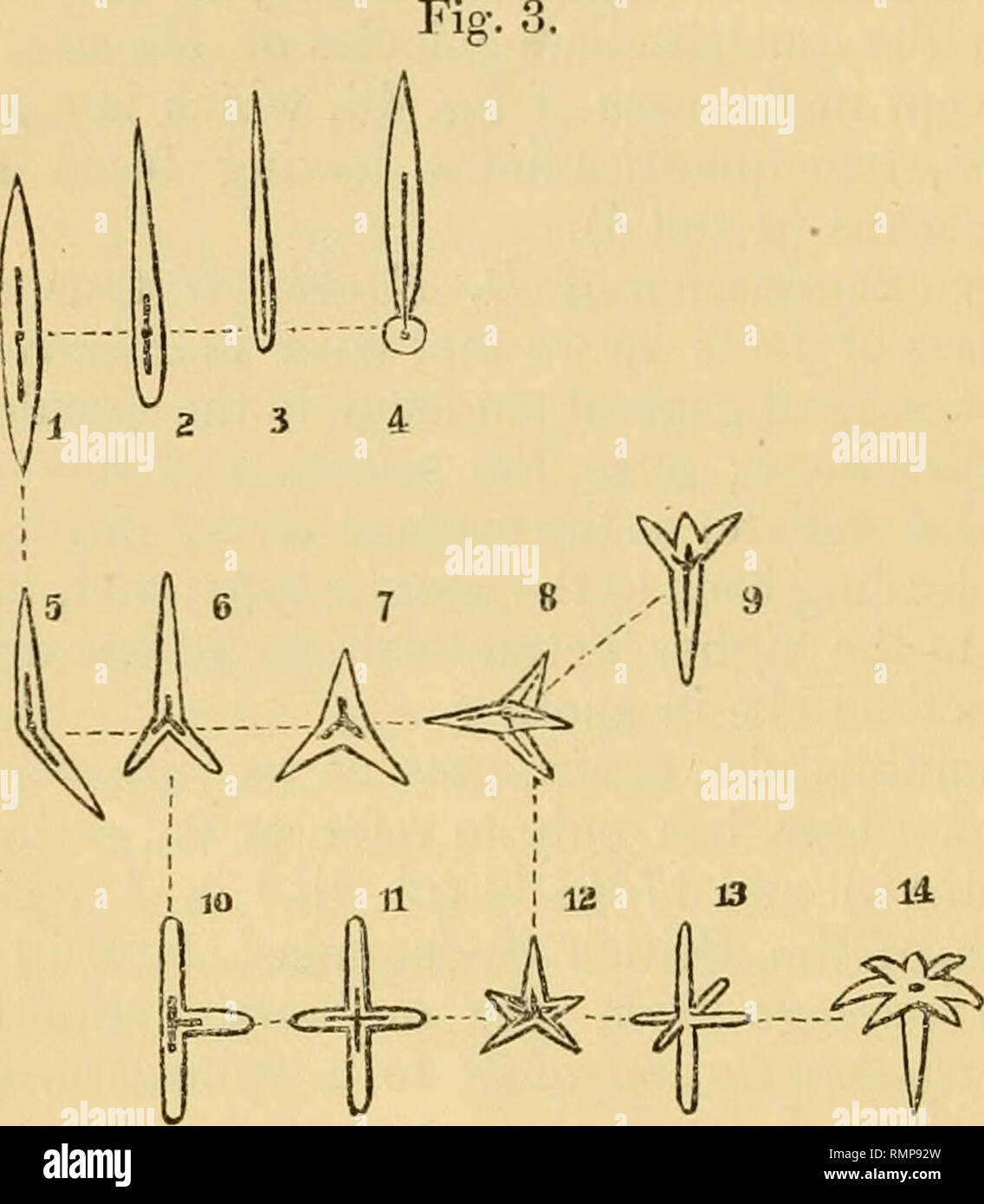. The Annals and magazine of natural history; zoology, botany, and geology. Natural history; Zoology; Botany; Geology. 24 Mr. W. J. Sollas on a new Genus and (fig. 3,3) • if accompanied by increased concentric growth of the initial cell, then the pin-headed acuate (fig. 3,4) is pro- duced. 4. An elongation of the cell in two directions inclined to each other at a less angle than 180°, gives us the curved acerate (fig. 3, 5), which is both biradiate and biaxial.. 5. The inclination of the two rays in fig. 3, 5, is followed by the appearance of a third in fig. 3, 6, where we have the triradiate

Image details
Contributor:
Library Book Collection / Alamy Stock PhotoImage ID:
RMP92WFile size:
7.2 MB (167.7 KB Compressed download)Releases:
Model - no | Property - noDo I need a release?Dimensions:
1478 x 1691 px | 25 x 28.6 cm | 9.9 x 11.3 inches | 150dpiMore information:
This image is a public domain image, which means either that copyright has expired in the image or the copyright holder has waived their copyright. Alamy charges you a fee for access to the high resolution copy of the image.
This image could have imperfections as it’s either historical or reportage.
. The Annals and magazine of natural history; zoology, botany, and geology. Natural history; Zoology; Botany; Geology. 24 Mr. W. J. Sollas on a new Genus and (fig. 3, 3) • if accompanied by increased concentric growth of the initial cell, then the pin-headed acuate (fig. 3, 4) is pro- duced. 4. An elongation of the cell in two directions inclined to each other at a less angle than 180°, gives us the curved acerate (fig. 3, 5), which is both biradiate and biaxial.. 5. The inclination of the two rays in fig. 3, 5, is followed by the appearance of a third in fig. 3, 6, where we have the triradiate spicule of Plectronella. In this spicule two of the radii arise from the proximal face of the cell and grow inwards towards the axis of the fibre on which it is situated, and the third ray arises distally and grows outwards away from the axis. 6. A growth of the cell in three directions making equal angles with each other, and having no determinate relations to any symmetrical line within the sponge, gives us the equi- angular triradiate spicule (fig. 3, 7), which occurs abnormally in Dercitus Bucklandi. (Triradiate spicules also occur as varieties in Eccionenia, Bwk., and Normania, Bwk. (' Mono- graph of British Spongiadge, ' vol. iii. pi. ix. figs. 4, 5, and pi. lxxxi. figs. 6, 8), and as a normal form in Sphinctrella horrida (Schmidt, 'Spongien d. atlant. Gebietes, ' pi. vi. fig. 7) and in Pachastrella connectens.) 7. A quadriradiate growth of the cell in directions having no determinate relations to the form of the sponge gives us the normal spicule of Dercitus Bucklandi (fig. 3, s).. Please note that these images are extracted from scanned page images that may have been digitally enhanced for readability - coloration and appearance of these illustrations may not perfectly resemble the original work.. London, Taylor and Francis, Ltd